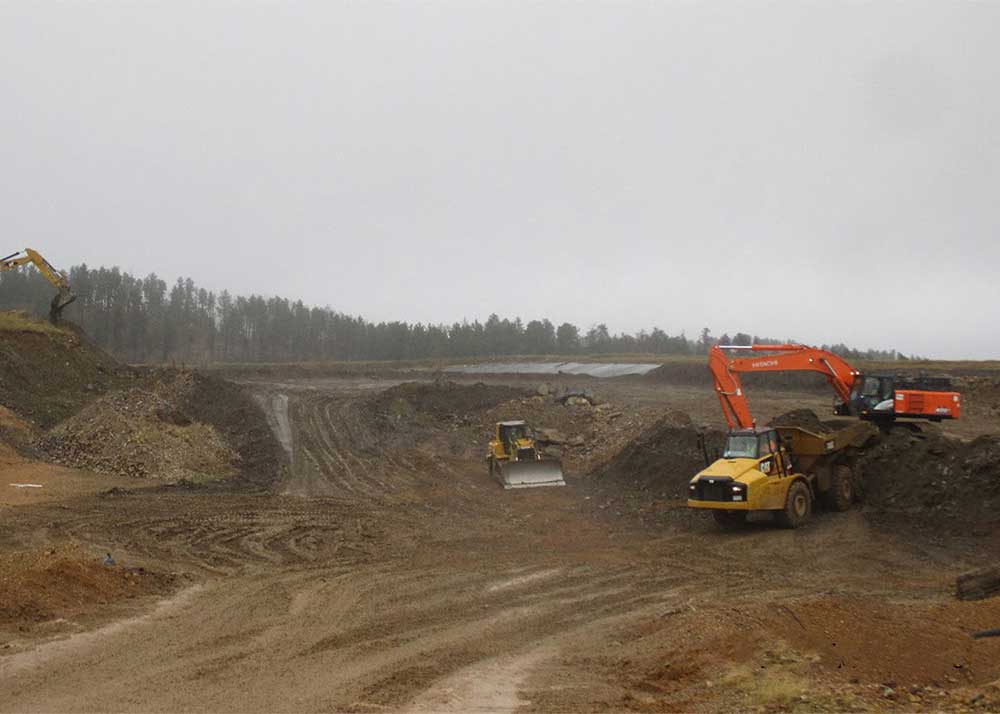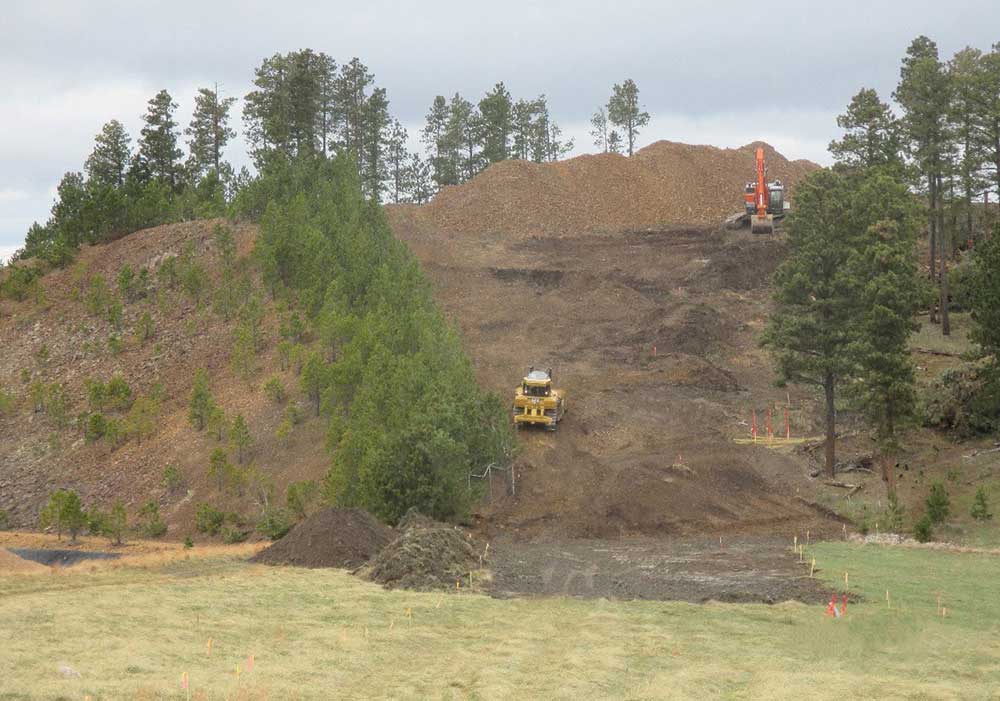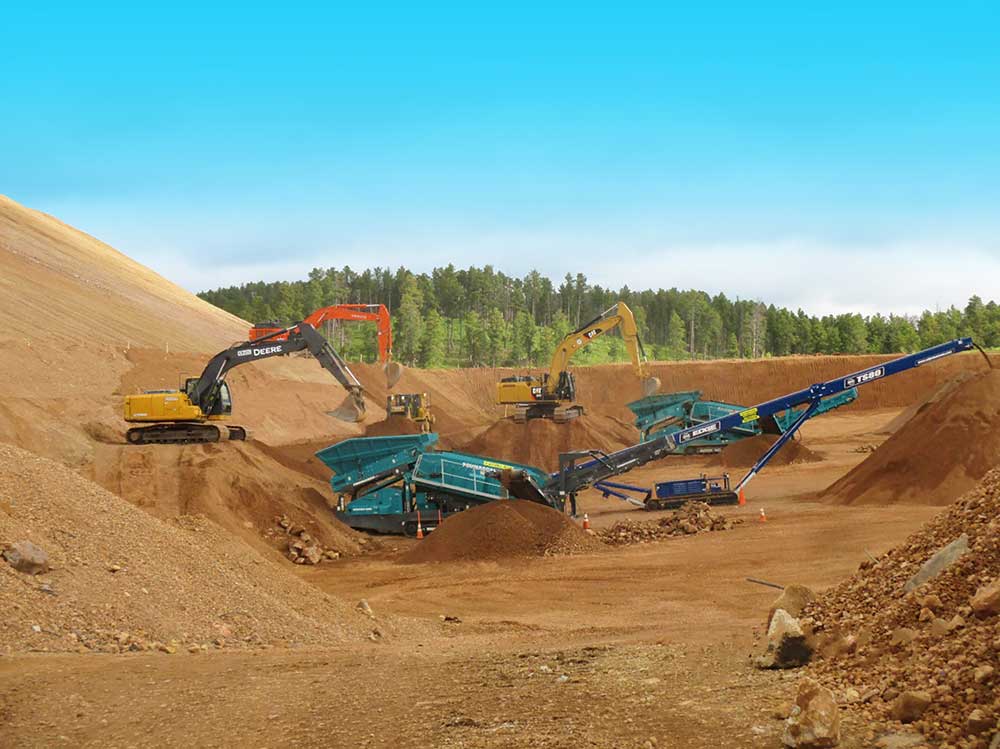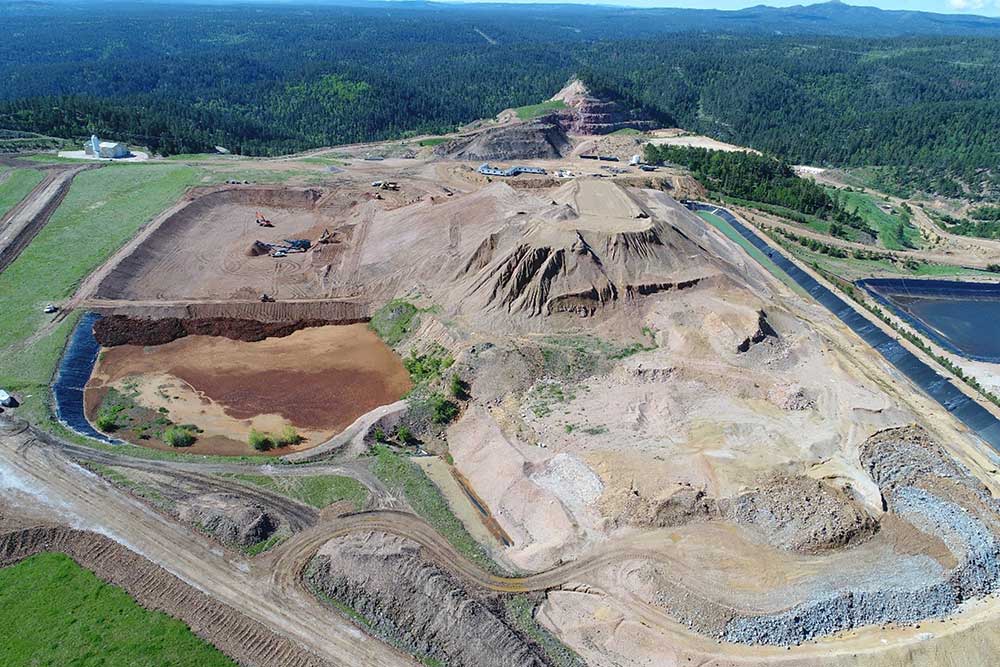Mine Superfund Site Access Road and Cell Construction
Challenge
The Gilt Edge Mine, located near Deadwood in Lawrence County, South Dakota, began as a gold mining site during the Black Hills Gold Rush in the late 19th century. Modern mining operations from 1986 to 1999 led to significant environmental issues, particularly acid mine drainage (AMD). This runoff often contains heavy metals and other harmful pollutants, posing risks to aquatic life and human health.
AMD can also degrade soil quality, affect plant growth, and damage infrastructure, making remediation efforts crucial to mitigate its environmental impact. After the mine’s owner filed for bankruptcy in 1999, the site was abandoned, ultimately resulting in severe contamination.
Designated a Superfund site by the EPA in 2000 after the state requested that the 360-acre site be listed on the National Priorities List, extensive remediation efforts began to manage Acid Mine Drainage (AMD) and stabilize the area, aiming to mitigate long-term environmental impacts and restore the surrounding ecosystem.
This project involved significant heavy civil construction and mine reclamation activities to address the extensive contamination and improve the site’s environmental health. Forgen was awarded two scopes of work under the prime contractor for this United States Army Corps of Engineers (USACE) project.
Solution
To complete this project, Forgen moved over 106,500 cubic yards of Highway 385 material from the Cell G footprint which was then screened to 1 in minus material. Two 1800 warrior screening plants were utilized to screen the material which produced 40 percent greater than 1 inch in size. Cell G was constructed using 40,000 cubic yards of spent ore which was below the relocated Highway 385 material. The North Access Road required the blasting of over 12,000 cubic yards of rock for road construction and a pipeline installation corridor.
We used over 80,000 cubic yards of shot rock and overburden for cut and fill to construct the North Access Road, allowing for easier access for subsequent phases of work on site. We simultaneously constructed the pipe corridor parallel with the road and down to the pump station at the Ruby Repository.
Our team installed over 31,000 linear feet of High-Density Polyethylene (HDPE) pipe from the Ruby Repository to the Anchor Hill pit, which included clean-out reservoirs, valves, and ten structures. Forgen utilized the services of experienced subcontractors for the blasting, hydroseeding, and survey support. Due to its location in the Black Hills, the project faced challenges of harsh rains, snow, and blizzard conditions. Originally scheduled to start in early March 2017, the project schedule was pushed due to poor weather conditions, but completed successfully, safely, and without incident.
Results
The work our team performed at the Gilt Edge Mine had significant impacts on the site and the subsequent remediation efforts.
The blasting and construction of the North Access Road and pipeline installation improved site access and operational efficiency, while the installation of the HDPE pipe from the Ruby Repository to the Anchor Hill pit facilitated better water management and environmental protection. Overall, the infrastructure improvements, enhanced waste and water management systems, and better site accessibility resulting from this project provide a solid foundation for future remediation efforts at the Gilt Edge Mine, allowing the site to be effectively managed and rehabilitated to meet the state’s, the USACE’s, and the EPA’s environmental standards.
17009Connect With Us
From active operations to site remediation and reclamation, our expertise in geotechnical and specialty civil construction ensures long-term environmental protection and operational success. Connect with our team to learn how we can support your next mining project.








